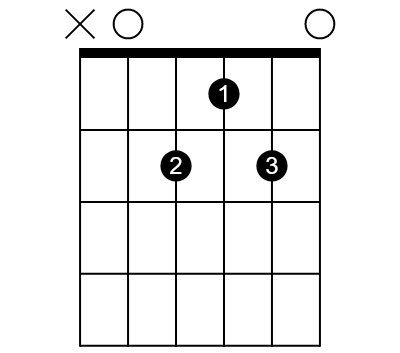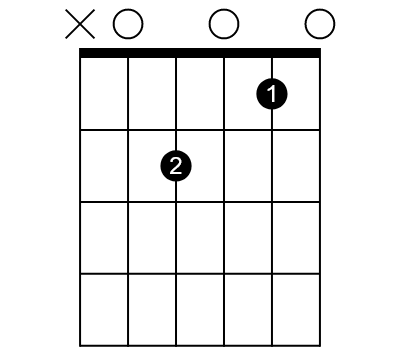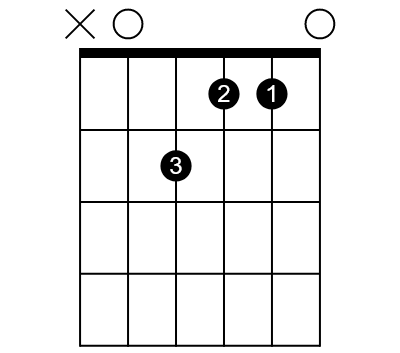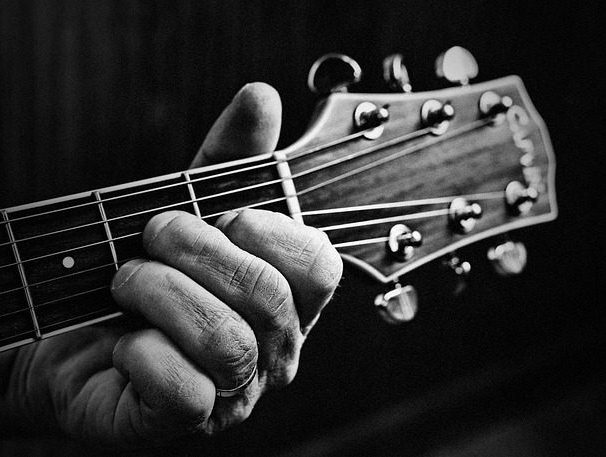
7 chords, or 7th chords, appears in virtually every genre of western music. But there isn’t just one “7 chord”. In fact, there are several different chords than you can consider to be 7 chords. Let’s take a look.
What is a 7 chord?
A 7 chord, or 7th chord, or simply a 7th, is a chord built usually off of a major or minor chord by adding either the 7th or flat 7th scale degree note to the basic chord.
A 7 chord can also be built off of a diminished chord.
To understand this topic, learn about scale degrees and get familiar with both major chords and minor chords
Depending upon what base chord you build the 7 chord from and whether you build the chord with a 7th degree or a flat 7th degree, the chord will have different characteristics and serve different purposes for your song.
The three most common 7 chords
The most common 7 chords are built off of the major and minor triads. You’ll find these three types of 7 chord popping up in music most frequently, so let’s talk about how to make those first.
The Major 7th chord
To create a major 7th chord, you add the 7th scale degree note of the major scale to the major triad. For instance, to create an A major 7th chord (usually written as Amaj7), add the 7th note of the A major scale to the A triad. The A major scale consists of these notes:
A, B, C#, D, E, F#, G#
Notice that the G# is the 7th scale degree. We also know that an A major chord consists of the notes:

A, C#, E
So, to create an Amaj7, we add a G# to the basic triad. Thus, an Amaj7 includes the notes:
A, C#, E, G#
Remember, the notes don’t have to be in that order. Any combination of those four notes makes an Amaj7.
By the way, that’s an Amaj7 being played in the picture at the top of this article.
It might help you to learn more about chord inversions
The Minor 7th chord
The minor 7 chord feels like it’s related to the major 7 chord in that it follows a similar formula for its construction. Like the major 7th, to make a minor 7 chord, you’ll start with the minor chord and add the logical 7th degree note. Since we’re working off of a minor chord, the logical 7th degree note is the minor 7th. Another name for the minor 7th degree is the flat 7th.
So for example, to make an A minor 7th chord (usually written as Am7) start with an A minor chord. The notes of an Am chord are:
A, C, E

Next we need to add the flat 7th of the A major scale. The notes of the A major scale are:
A, B, C#, D, E, F#, G#
The 7th note of that scale is the G#. Since we want to add the flatted 7th, we need a G note. So, an Am7 chord consists of the notes:
A, C, E, G
Again, those notes can be in any order and you still have an Am7.
The Dominant 7th chord
Dominant 7th chords appear all the time in western music. In fact, they are probably the most common type of 7 chord. Interestingly, this chord is a bit of a hybrid.
Notice that in the two chords we just discussed, the 7th degree you add is what I called logical. For example, you build the major 7 chord with the major 7th scale degree. And you build the minor 7 chord with the minor 7th scale degree. Makes sense. It’s logical and comfortable.

But the dominant 7th chord mixes things up. To make a dominant 7th chord, you add the minor 7th scale degree to the major chord. So if you start with A as our example, instead of adding a G# to create an Amaj7, you add a G note to create an A dominant 7th (written as A7).
You can read in great detail about dominant 7th chords
Dominant 7th chords are powerhouses and really serve well to drive a chord progression along.
The mixing of the minor 7th aspect with the major chord causes a great deal of tension that begs for resolution back to the root chord of the key. For example, A7 is the V chord in the key of D, where (of course) D is the root chord, or the I chord. So an A7 resolves beautifully to a D chord.
You hear this sound all the time in the blues and jazz and all the genres they inspired like rock and roll, funk, country, and so many more.
Less common 7 chords
The three 7 chord forms we just discussed are by far the most common. And among those, the dominant 7 is most common of all. Still, there are a few other less common, but still interesting options.
Two of those options build off of diminished or half diminished chords. If you want to know more about those, read more about diminished chords.
But here I want to talk about an often overlooked, but really powerful chord. The minor major 7th chord. Yes, you read that right, the minor major 7th. It has a bit of a crazy name, and that matches its somewhat crazy sound. But it’s a very cool chord in the right contexts.
The minor major 7th chord
Like the dominant 7th chord–and as its name clearly communicates–the minor major 7th chord is a mixed chord. You can almost think of it as the opposite of a dominant 7th chord.
To create a minor major 7th chord, you add the major 7th degree note to a minor chord. The first thing you’ll probably think of when you play this chord is the last chord of the classic James Bond theme song.
If the mixing of minor with major of the dominant 7th chord is full of tension, the mixing of the major with the minor of the minor major 7th chord is down right unsettling!
But, it doesn’t always have to be so unsettling. It can also be used as a beautiful element in the right chord progression. For example, George Harrison used it in one of the Beatles’ most beautiful songs, “Something” from the Abbey Road album.
Creating a minor major 7 chord
Let’s look at an example to see how to make a minor major 7. Let’s go back to our Am and make an A minor major 7th chord. By the way, there doesn’t seem to be solid consensus on how to write this in chord charts, but I like AmMaj7. You might also see AmM7, AminMaj7, and others.
We saw that Am consists of the notes:
A, C, E

To make Am7, we added the flat 7 (or minor 7) which was the note G. So, it’s easy to see that to make the AmMaj7 we need to add the note G#, the major 7th note. So AmMaj7 is made up of the notes:
A, C, E, G#
As I said, it can be kind of a crazy-sounding chord. Or, it can be a beautiful chord. In any case, it’s fun to experiment with it to see what you can do!
Where to go from here with the 7 chord
Now that you know how to create each different 7 chord, where do you go from here? We talked a little bit about when you would use a couple of these types of 7 chord, but I’ll talk in more detail about how you might use each of them in future articles.
For now, experiment with creating each of these chords and try using them in your playing. Have fun with them and become familiar with their sounds.
Conclusion
The 7 chord is really more than just one chord. There are several different chords that fall into the 7 chord category. In each case, however, you create these chords by adding a 7th interval note to the base chord.
The 7th note you add can be a major or minor 7th interval, and the characteristics of the chord depend upon which you choose. The dominant 7th chord is the most common and is very useful for resolving back to the I chord of a progression. It’s just one of three most common 7th chord forms also including the major 7th and minor 7th chords.
Less common, but still cool are seventh chords build off of the full diminished and half diminished triads. But one of the coolest of all builds a major 7th interval on top of a minor chord to create the minor major 7th chord.
Now that we’ve learned how to make these chords, future articles can more fully explore the unique characteristics of each of them.

What are the fundamental principles of exploring the 7 chord, as discussed in the article?